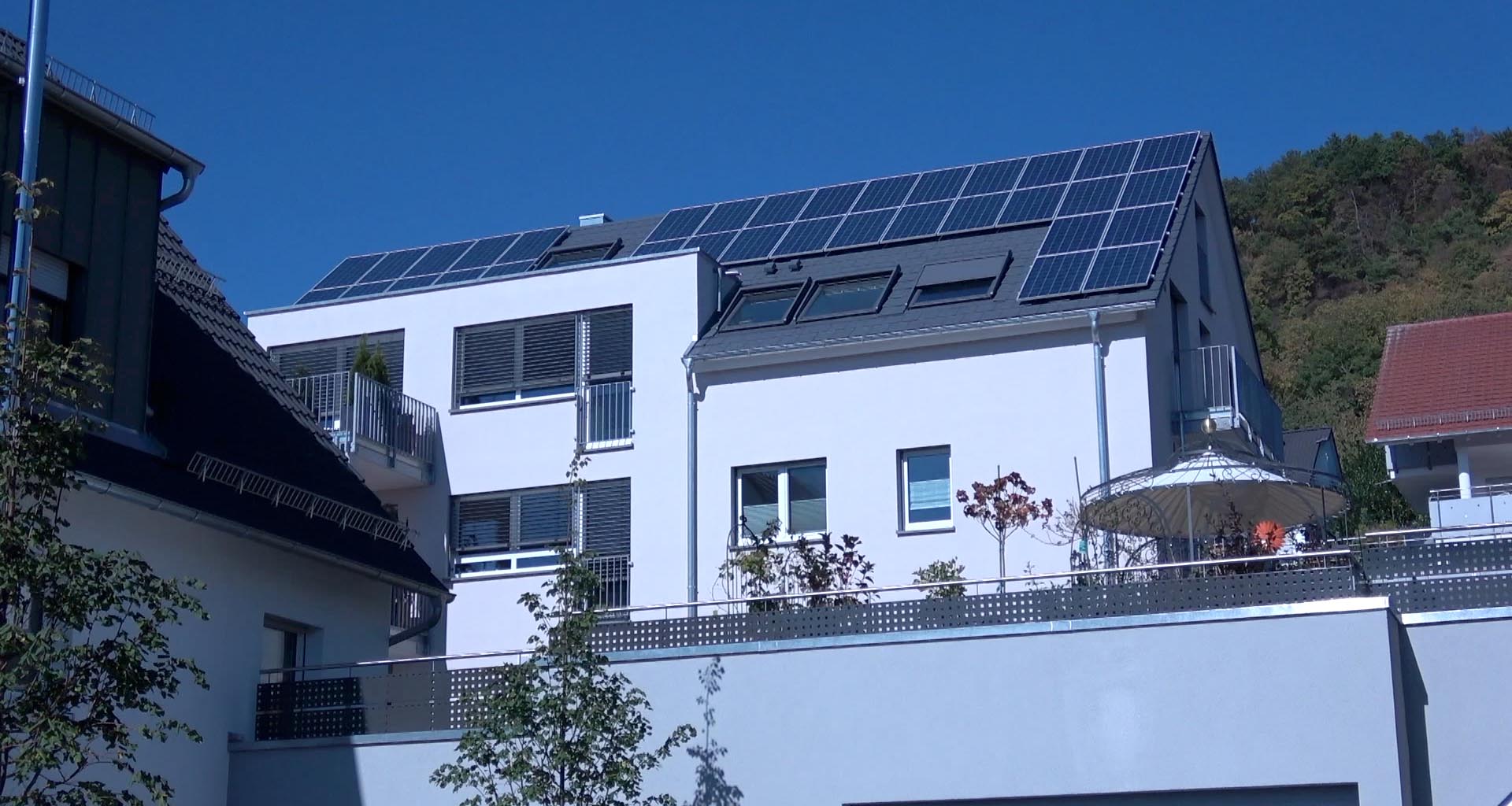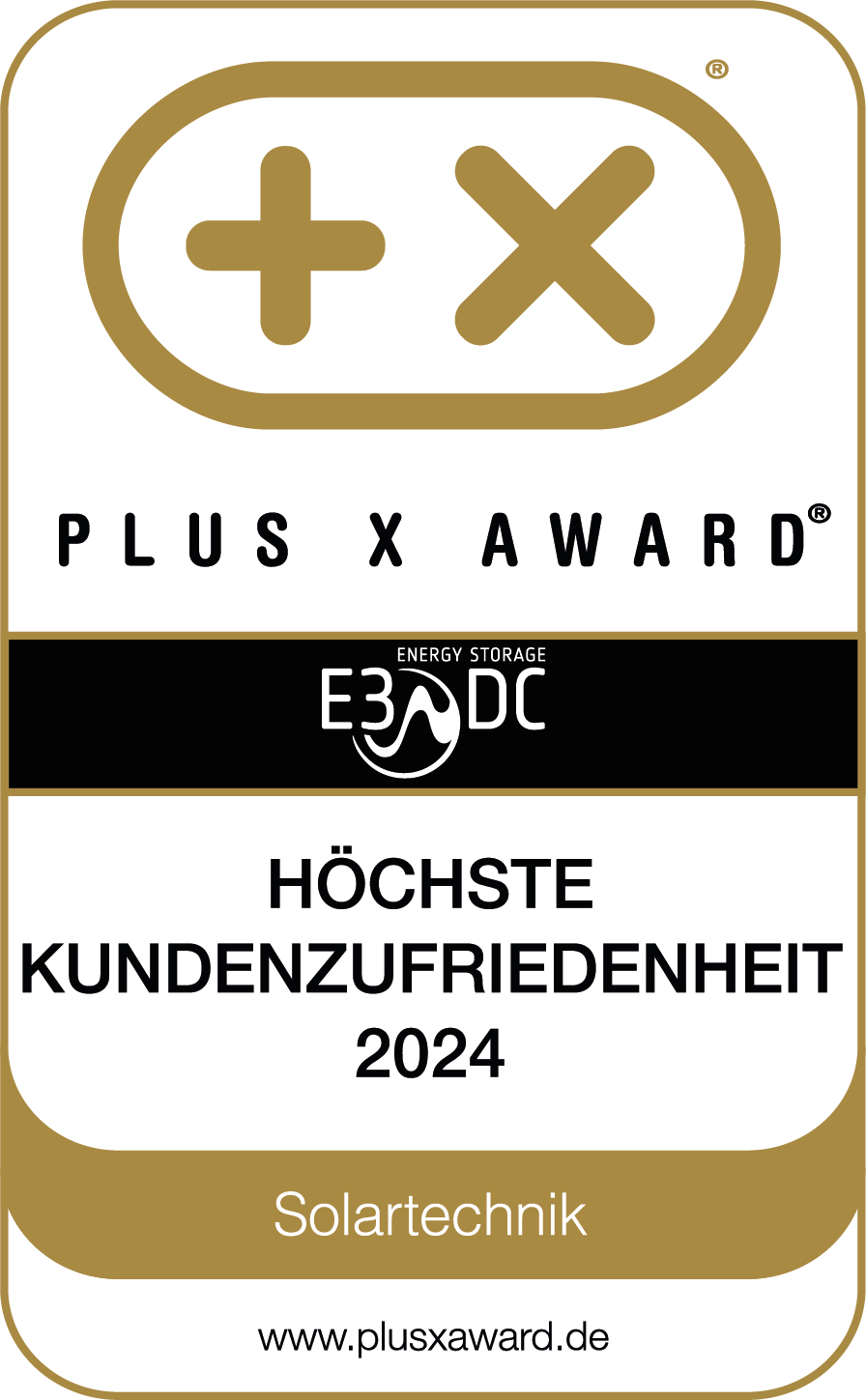
The independence team from the sun and fuel cell
The independence team from the sun and fuel cell
Otto Rentschler is self-sufficient thanks to two power sources
- E3/DC home power station S10 E controls power generation and consumption in the apartment building
- 74 % of the electricity demand is covered by the PV system and the fuel cell
Facts at a glance
- Object: Apartment house with three residential units, year of construction: 2017
- Living space: 370 m2
- Location: Herrenberg, Baden-Württemberg, Germany
- PV system: 9.18 kW
- Heating: fuel cell
- Storage: home power station S10 E (9.2 kWh)
- Degree of independence: 74 % (forecast)
In Herrenberg in southern Germany, Otto Rentschler built a house with three apartments, one of which he lives in himself. The power supply runs largely on his own, because his storage system, an E3/DC home power station, enables the owner to use electricity from the PV system and from a fuel cell heating system specifically for his own needs.
Independence is also becoming more and more common in apartment buildings. One reason for this is the commitment of building owners and specialist companies such as Martin Walz Elektro- und Solartechnik GmbH & Co. KG. In Herrenberg, the solar engineer Gerhard Büttner designed and implemented a system solution for Otto Rentschler that leads to 74 percent independence in apartment buildings. One of the two rented apartments is also part of the independence model.
Rentschler himself is active in the building sector, and as a man of his trade he wanted to optimise the energy efficiency of his new apartment building as far as possible. The building was to meet a very high efficiency standard, and in order to make optimum use of the subsidies available in Germany, a PV system with an E3/DC home power station was on the equipment list from the outset. Gerhard Büttner installed an S10 E as the heart of the entire concept.
But Rentschler wanted to achieve even more in terms of energy efficiency than a solar power system with an installed capacity of 9 kWp could provide. Instead of a conventional heating system, a fuel cell heating system was therefore installed which also generates electricity and is connected to the home power station as an AC source.
Optimal addition of two producers
Therefore, own energy is available all year round, stresses Gerhard Büttner: „PV plant and fuel cell BHKW complement each other perfectly, and one comes thereby to a very good economic result.“ Energy production, storage and distribution in the domestic network are controlled by the home power station, which builds its own network in the event of a power failure and offers a three-phase backup power supply. This is a function that distinguishes the home power station particularly from the solar engineer‘s point of view. If the worst comes to the worst, the customer is optimally protected via his stand-alone grid, can use backup power from the battery and the PV system and recharge the storage tank with solar energy.
No incidental energy costs at the end of the year
But independence is also very high in regular operation. The forecast for a whole year as prepared by Gerhard Büttner is promising: With the expected 11,000 to 12,000 kWh of solar power, an annual independence of 74 % is achieved. And the significant increase in the generation balance generates income via the feed-in tariff, which more than compensates for the procurement costs for the residual electricity. Otto Rentschler is very satisfied with his house: „I simply see the advantage of profitability in that I no longer have to purchase electricity and can produce it myself“. In addition, he can heat relatively cheaply thanks to the energy standard and the very efficient fuel cell:
„I see the combination of fuel cell, photovoltaics and home power station as a very sensible purchase, which also pays for itself in the end“. And Gerhard Büttner hopes that such an integrated model of own generation will be implemented much more frequently. Because there are still too many inactive roofs even in this southern German region!
